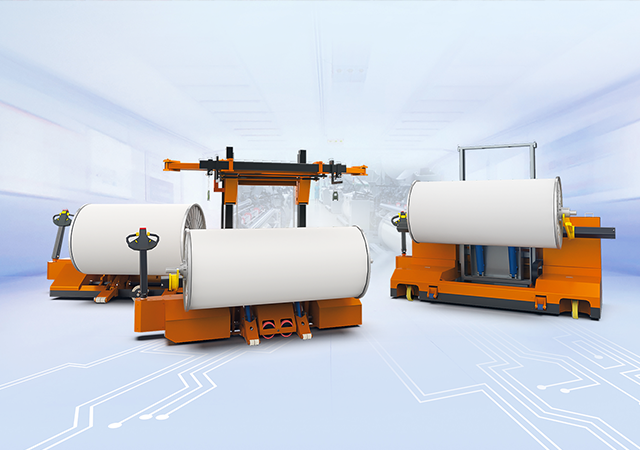The landscape of garment and textile production underwent a profound transformation during the industrial revolution. Manual techniques gave way to automation, reshaping the industry in remarkable ways. Today, the integration of automation in garment manufacturing holds the potential to revolutionize sustainability practices in the field.
Resource Efficiency
Automation stands to enhance material utilization and resource efficiency within garment manufacturing. Automated cutting systems, for instance, meticulously analyze patterns to optimize the arrangement of fabric pieces, minimizing material waste. Leveraging advanced algorithms and computer vision, these systems determine the most efficient pattern-cutting strategies, reducing fabric scraps and maximizing yield. This translates to substantial savings in fabric consumption, costs, and waste generation.
Moreover, automation facilitates streamlined inventory management. By linking automated machinery to inventory systems and real-time data, manufacturers can precisely monitor and regulate material usage.
Furthermore, automation boosts production efficiency through accelerated and precise manufacturing processes, eliminating human errors and minimizing the need for rework. It also enables predictive maintenance and machine optimization by monitoring machine performance, detecting anomalies, and scheduling maintenance proactively. This approach curtails downtime, optimizes machine utilization, and extends equipment lifespan, fostering resource and cost savings.
Energy Conservation
The integration of automation in garment manufacturing offers a pathway to energy conservation, contributing to a more sustainable industry. Automated systems harness sophisticated technologies like variable frequency drives, intelligent sensors, and power management algorithms to optimize energy consumption. This fine-tuned control minimizes waste and boosts overall efficiency. The replacement of energy-intensive machinery with automated, energy-efficient alternatives yields significant energy savings, subsequently reducing greenhouse gas emissions.
Additionally, automation permits the implementation of energy management systems and intelligent controls. These systems monitor energy consumption, pinpoint energy-intensive processes or equipment, and deliver insights for optimization. Automated controls regulate energy use based on demand, toggling off equipment during idle periods or adjusting power levels to match production needs.
Supply Chain Transparency and Accountability
Automation fosters enhanced traceability and transparency across the garment manufacturing supply chain. By melding automated systems with digital technologies, tracking and documenting each production stage becomes seamless. This integration ensures adherence to sustainability standards and ethical practices, enabling consumers to make informed choices and support brands committed to transparency and accountability.
Enhanced Worker Safety and Well-being
Contrary to misconceptions, automation advances worker safety and well-being in garment manufacturing by fostering safer working environments. Automation replaces or aids workers in physically demanding, repetitive, or hazardous tasks, curbing the risk of workplace injuries and improving overall worker health.
Automation can tackle monotonous, physically demanding, or repetitive tasks, such as material handling and lifting heavy loads. By reducing the need for manual labor, automation minimizes injury risk and enables workers to focus on more skilled tasks. This shift enhances worker engagement, job satisfaction, and overall well-being.

Navigating Job Security in the Age of Automation
The integration of automation into the textile industry holds the promise of sustainable transformation. However, concerns about job displacement loom large. The clothing industry employs an estimated 300 million individuals, and automation threatens to replace human workers in repetitive tasks. This raises the specter of unemployment and underscores the need for widespread reskilling efforts.
Nonetheless, brands can mitigate job displacement risks through responsible automation adoption. By embracing automation strategically, manufacturers can enhance competitiveness, efficiency, and sustainability—factors that ultimately safeguard jobs.
SUNTECH electric warp beam truck eradicating the limitations of manual handling, these motorized beam trolleys not only alleviate labor intensity for textile industry workers but also elevate overall work efficiency while significantly reducing labor costs. The increased loading capacity and reduced transportation cycles further boost productivity and enhance product quality, perfectly aligning with our commitment to streamlining textile machinery operations. The harmonious blend of automation and human expertise can drive balance and security in the industry.
Conclusion
Automation wields the potential to transform garment manufacturing sustainably and ethically. The adoption of automation technologies promises heightened efficiency, reduced waste, improved worker safety, and a diminished environmental footprint. SUNTECH Textile Machinery as a pioneer in the textile machinery, by introducing advanced automation technology and intelligent solutions, our machinery not only enhances the production efficiency of textile enterprises but also plays a pivotal role in reducing resource waste and lessening the environmental burden.




